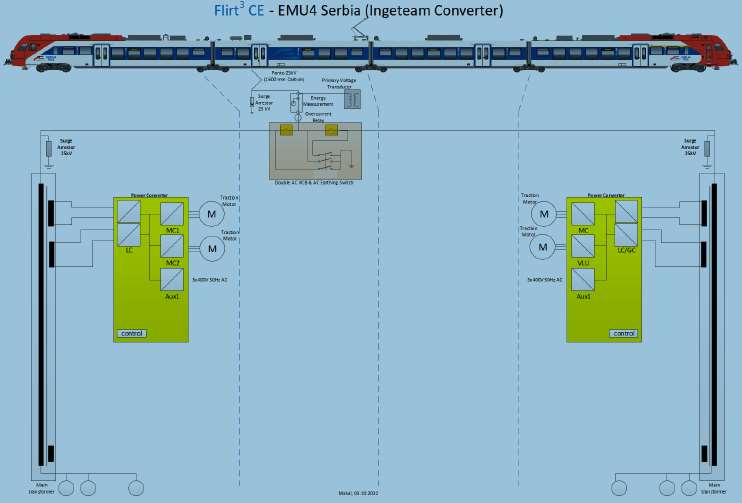Fluid dynamics analysis for a production line
Abstract
Magnetic filters are used on companies for mass flux and volume flux values that help to cover day-to-day production. This work begins by describing the problem of magnetic filter fractures as of industrial interest. A brief description of how magnetic filters must work on applications according to requirements on the process line. On the next section, it is possible to find the explanation of structural fractures and mistakes on the design or data sheet, which are usually not considered in guaranteed policy. Are mentioned more than one math modeling, taking the simplest to show the effective value of maximum pressure tolerated on magnetic filters differs from estimated for controlled conditions. Solutions shown in the article are a first approach to a future general model theory that could explain how applied science works in a factory where there is no time to stop production. This work relates the math model and some values to application, meaning both the project hypothesis modeling and factories requirements for their equipment. Results depict volume, velocity, density, and pipeline relation to the pressure increase over the values on the data sheet from quality department tests. Conclusions describe the connection of the math model analysis with real situations on the application or possible structural damage. And its relationship with the proper function of magnetic filters for the purpose of lifespan analysis on future works. This work is a proof that in a few weeks, companies can have a solution for their problems, letting them buy some time to avoid any future issues.
References
[1]Spevakova I, Ruditser L, Eroshenko V, et al. New Magnetic Filter for Chemical Industry. Magnetic and Electrical Separation. 1993; 5(1): 17-32. doi: 10.1155/1993/82842
[2]Szatyłowicz E, Skoczko I. Magnetic Field Usage Supported Filtration Through Different Filter Materials. Water. 2019; 11(8): 1584. doi: 10.3390/w11081584
[3]Flow Ezy Filters. Magnetic filtration: Sub-micron filtration for industrial fluids in precision applications. Available online: https://www.flowezyfilters.com/pdfs/magnetic/FlowEzyMagneticFiltration_master_catalog.pdf (accessed on 10 January 2024).
[4]Eclipse Magnetics. Magnetic filtration systems: Sub-micron filtration for industrial fluids in precision machining & wash system applications. Available online: https://www.eclipsemagnetics.com/site/assets/files/23188/filt_-_etna_v14_english_2020.pdf (accessed on 10 January 2024).
[5]Endoh S, Yamaguchi K. Characteristics of pressure drop across spongy nickel filter in magnetic separation process. Powder Technology. 1985; 45: 35-41.
[6]Alton Everest F. The Master Handbook of Acoustics, 4th ed. McGraw Hill; 2000. pp. 50-64,110-115.
[7]Aris R. Equations of Motion and Energy in Cartesian Coordinates. In: Vector, Tensors, and the Basic Equations of Fluid Mechanics. Dover Publications; 1989.
[8]Tam AC. Applications of photoacoustic sensing techniques. Reviews of Modern Physics. 1986; 58(2): 381-431. doi: 10.1103/revmodphys.58.381
[9]Bhattacharya K, Banerjee S, Mondal NK. Analytical computation of process noise matrix in Kalman filter for fitting curved tracks in magnetic field within dense, thick scatterers. The European Physical Journal C. 2016; 76(7). doi: 10.1140/epjc/s10052-016-4243-1
[10]Morfey CL, Sorokin SV, Gabard G. The effects of viscosity on sound radiation near solid surfaces. Journal of Fluid Mechanics. 2011; 690: 441-460. doi: 10.1017/jfm.2011.449
[11]Rosenhouse G. The Essence of Noise in Natura with Reference to Acoustics. WIT Transactions on Ecology and Environment; 2012. p. 160.
[12]Rhoads BL. River Dynamics: Geomorphology to Support Management, 1st ed. Cambridge University Press; 2020. pp. 75-95.
[13]Arteaga Marín J, Benavidez Muñoz H. Velocity profiles in a free-surface flow system with a hydraulic rotational vortex (Spanish). ESPAMCIENCIA. 2018; 9(1): 33-42.
[14]Newland DE. Introduction to probability distributions and averages. In: An Introduction to Random Vibrations, Spectral and Wavelet Analysis, 3rd ed. Dover Publications; 2005.
[15]Newland DE. Joint probability distributions, ensemble averages. In: An Introduction to Random Vibrations, Spectral and Wavelet Analysis, 3rd ed. Dover Publications; 2005.
[16]Newland DE. Correlation. In: An Introduction to Random Vibrations, Spectral and Wavelet Analysis, 3rd ed. Dover Publications; 2005.
[17]Newland DE. Spectral density. In: An Introduction to Random Vibrations, Spectral and Wavelet Analysis, 3rd ed. Dover Publications; 2005.
Copyright (c) 2024 Nestor Antonio Flores Martínez, Valentín Guzmán Ramos, Ricardo Chapa García

This work is licensed under a Creative Commons Attribution 4.0 International License.





.png)


